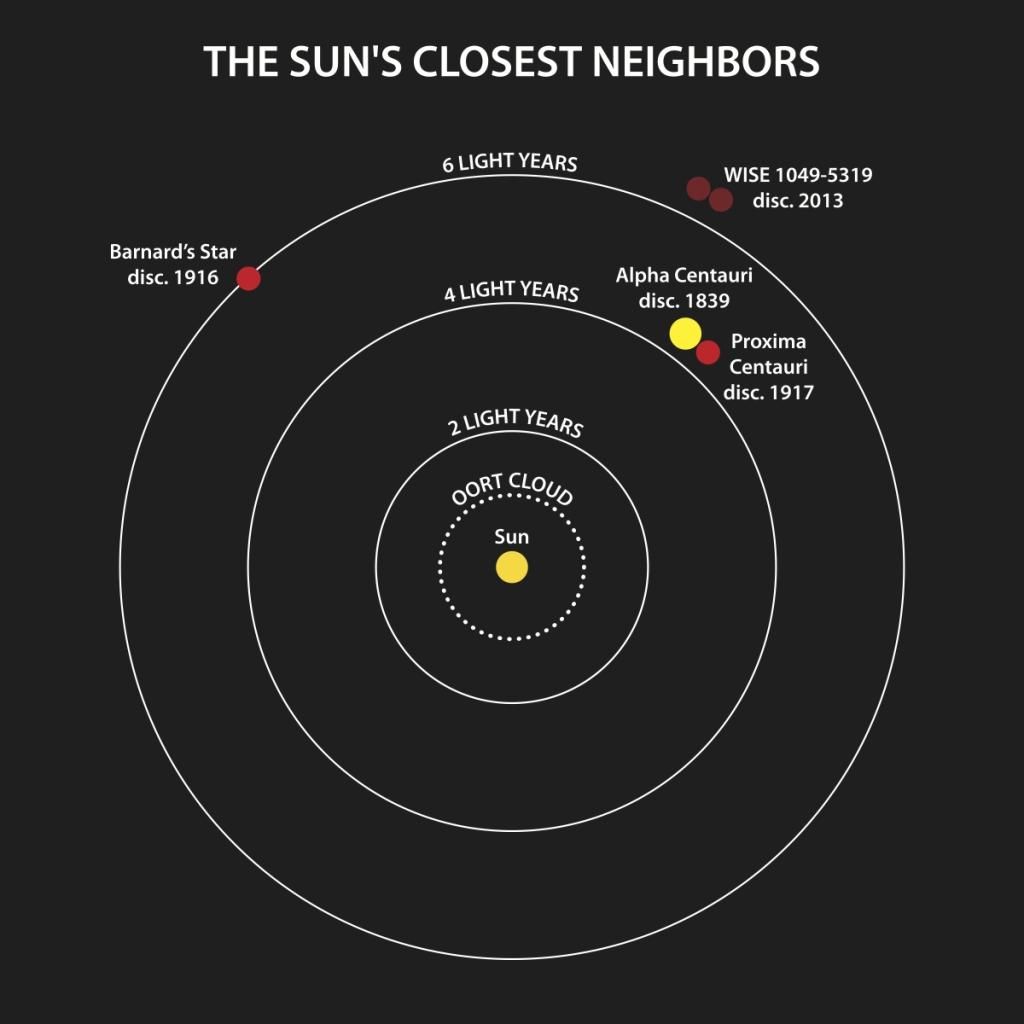QUOTE
With a distance of 2.0±0.15 pc, WISE 1049−5319 is the closest neighbor of the Sun that has been found in nearly a century (Henderson 1839; Barnard 1916; Adams & Joy 1917; Voˆute 1917). It is only slightly more distant than Barnard’s star, which is the second nearest known system (1.834±0.001 pc, Benedict et al. 1999). The low galactic latitude of WISE 1049−5319 (l = 5◦) is likely the reason why it was not found in previous surveys for nearby brown dwarfs, which have tended to avoid the galactic plane. Because of its proximity to the Sun, WISE 1049−5319 is a unique target for a variety of studies, such as direct imaging and radial velocity searches for planets.


Images from Welcoming the New Neighbours at the Dynamics of Cats blog.
